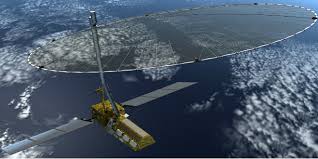NISAR: ISRO, NASA jointly working Dual Frequency Synthetic Aperture Radar Imaging Satellite
Indian Space Research Organisation (ISRO) and Jet Propulsion Laboratory (JPL) of NASA are jointly working on the development of NASA-ISRO Synthetic Aperture Radar (NISAR), a Dual Frequency Synthetic Aperture Radar Imaging Satellite.
Salient Features
NISAR is a dual frequency (L & S Band) Radar Imaging Satellite. It will be the first radar imaging satellite to use dual frequency. It will be the world’s most expensive earth-imaging satellite till date, costing around $1.5 billion. It aims to study global environmental change and natural disasters.
The L-band Synthetic Aperture Radar is being developed by JPL, while ISRO is developing S-band Synthetic Aperture Radar. The L and S band microwave. ISRO will be also responsible for design and development Spacecraft Bus ,data transmission system, spacecraft integration & testing.
It will be launched using GSLV in year 2021. It will have mission life of 3 years. It is planned to be launched into a Sun-synchronous dawn to dusk orbit.
Applications: Data obtained from this satellite will be useful for variety of applications, which include natural resources mapping and monitoring, estimating agricultural biomass over full duration of crop cycle, assessing soil moisture, monitoring of floods and oil slicks, coastal erosion, assessment of mangroves, surface deformation studies, ice sheet collapses and dynamics
Achievements of ISRO in 2017
Record of launches 104 satellites: These satellites were launched in a single launch onboard PSLV-C37 in February 2017. These satellites include two Indian Cartosat-2 series satellites, two Indian Nano-Satellites, one Nano satellite from Indian University and 130 foreign satellites from 19 countries.
31 satellites Launched: These satellites were launched in a single launch on-board PSLV-C38 in June 2017.
South Asia Satellite (GSAT-9): The 2230 kg satellite was launched by Geosynchronous Satellite Launch Vehicle Mark-II (GSLV-F09) into its planned Geosynchronous Transfer Orbit (GTO) in May 2017. This was the fourth consecutive success achieved by GSLV carrying indigenously developed Cryogenic Upper Stage.
First developmental flight of GSLV MkIII-D1: GSLV Mk-III is India’s heavy lift launch vehicle GSLV Mk-III. Its first test was successfully conducted in June 2017 from Satish Dhawan Space Centre, Sriharikota with launch of GSAT-19 satellite.
Month: Current Affairs - December, 2017


